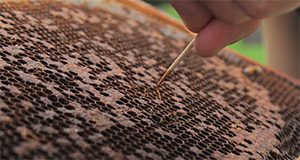Abstract
European foulbrood is a bacterial disease that affects Western honey bee larvae. It is a concern to beekeepers everywhere, though it is less serious than American foulbrood because it does not form spores, which means that it can be treated. This 7-page fact sheet written by Catherine M. Mueller, Cameron J. Jack, Ashley N. Mortensen, and Jamie Ellis and published by the UF/IFAS Entomology and Nematology Department describes the disease and explains how to identify it to help beekeepers manage their colonies effectively and prevent the spread of both American and European foulbrood.
https://edis.ifas.ufl.edu/in1272
Unless otherwise specified, articles published in the EDIS journal after January 1, 2024 are licensed under a Creative Commons Attribution-NonCommercial-NoDerivs 4.0 International (CC BY-NC-ND 4.0) license.

